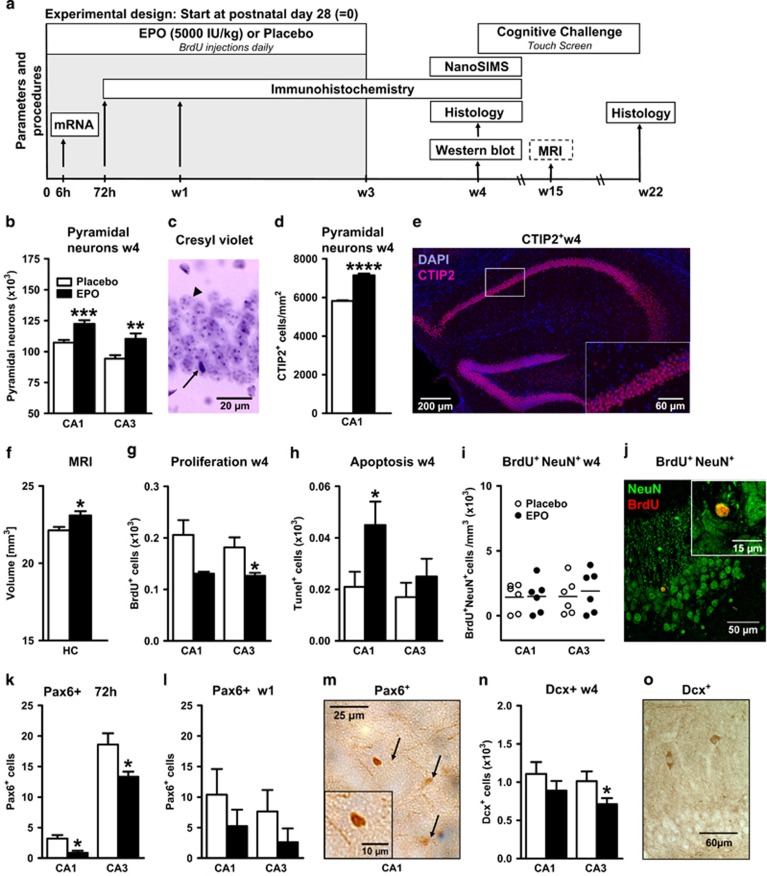Figure 1.
Erythropoietin (EPO) effects on neuron number, proliferation and apoptosis in CA1 and CA3. All data are based on bilateral counting. (a) Experimental design of the in vivo experiments (see f for age at treatment in the magnetic resonance imaging (MRI) design). Mice received EPO or placebo intraperitoneally (i.p.) every other day, starting on postnatal day 28. (b) Number of pyramidal neurons in CA1 and CA3 at 1 week after 3-week EPO versus placebo treatment (w4) (analysis was performed in two independent experiments with identical results; n=17 in CA1 for both groups, and n=16 and n=18 in CA3 for placebo and EPO, respectively). (c) Sample cresyl violet staining, illustrating that pyramidal neurons (arrowhead) can be clearly distinguished from other cells (arrow). (d) Number of CTIP2+ pyramidal neurons in CA1 at w4 (n=4 per group). (e) Illustration of the CTIP2 staining in the dorsal hippocampus. The white rectangle indicates the magnified area shown in the lower right corner. (f) MRI-based volumetrical analysis of whole hippocampus (HC) after EPO or placebo (n=6 per group; treatment in this set of male mice was initiated at 11 weeks of age; that is, MRI data were obtained at age 15 weeks). (g) Proliferation determined by 5'-bromo-deoxyuridine (BrdU) incorporation at w4 (placebo n=7 and EPO n=6). (h) Apoptotic cells analyzed with terminal deoxynucleotidyl transferase-mediated dUTP nick end labeling (Tunel) staining at w4 (n=10 for both groups). (i) Confocal analysis of BrdU and NeuN double-positive cells at w4 (n=6 for both groups). (j) Confocal picture showing a neuron staining positively for NeuN (green) and BrdU (red). (k and l) Number of Pax6-positive cells at 72h and w1 (n=9 per group). (m) Pax6+ cells (arrows) visualized by 3,3'-diaminobenzidine (DAB) staining. (n) Number of doublecortin (Dcx)-positive cells at w4 (n=9 per group). (o) Sample picture of Dcx+ cells. All bar graphs shown as mean±s.e.m.; all analyses unpaired, two-tailed t-tests; *P<0.05, **P<0.01, *** P<0.001, ****P<0.0001.

